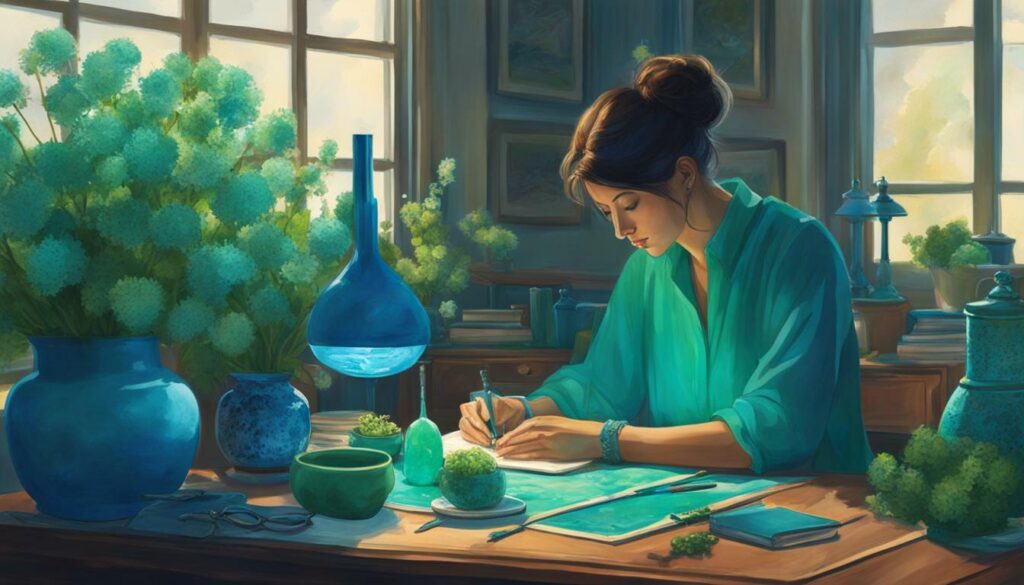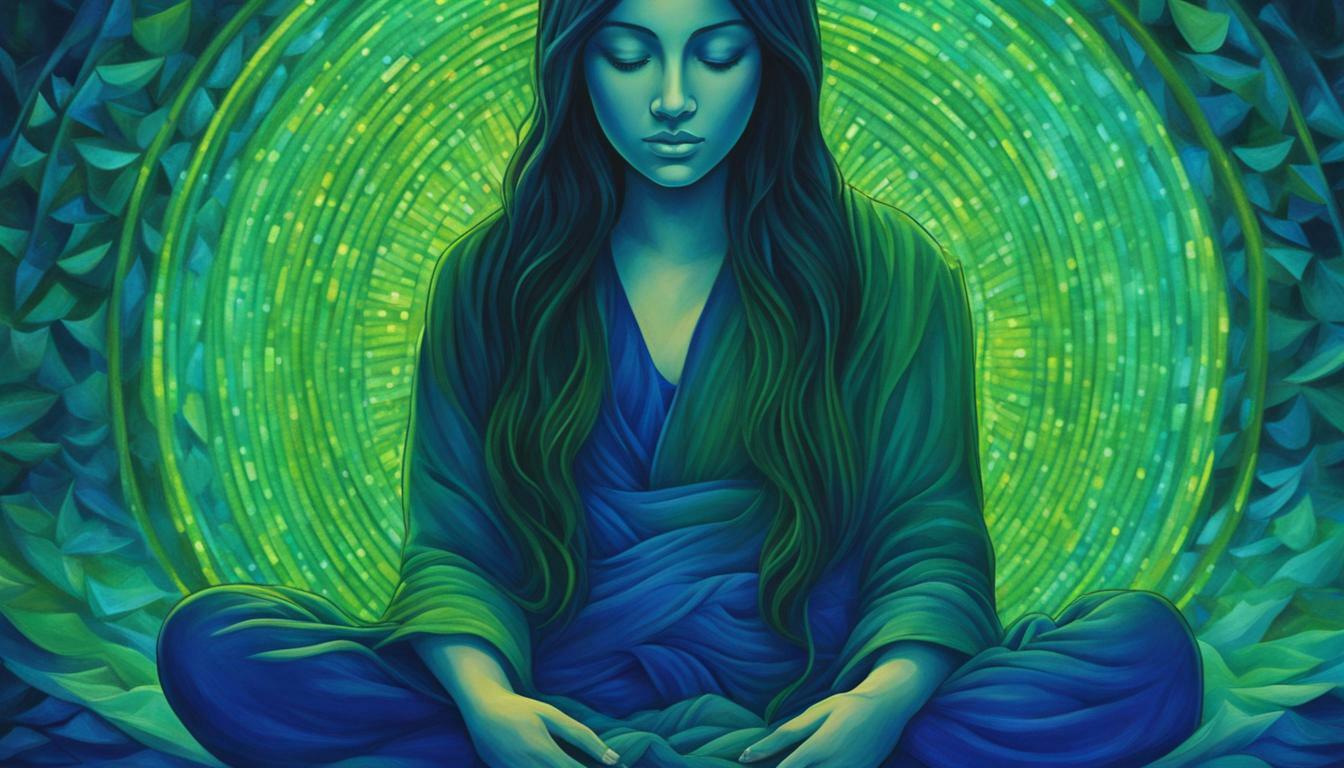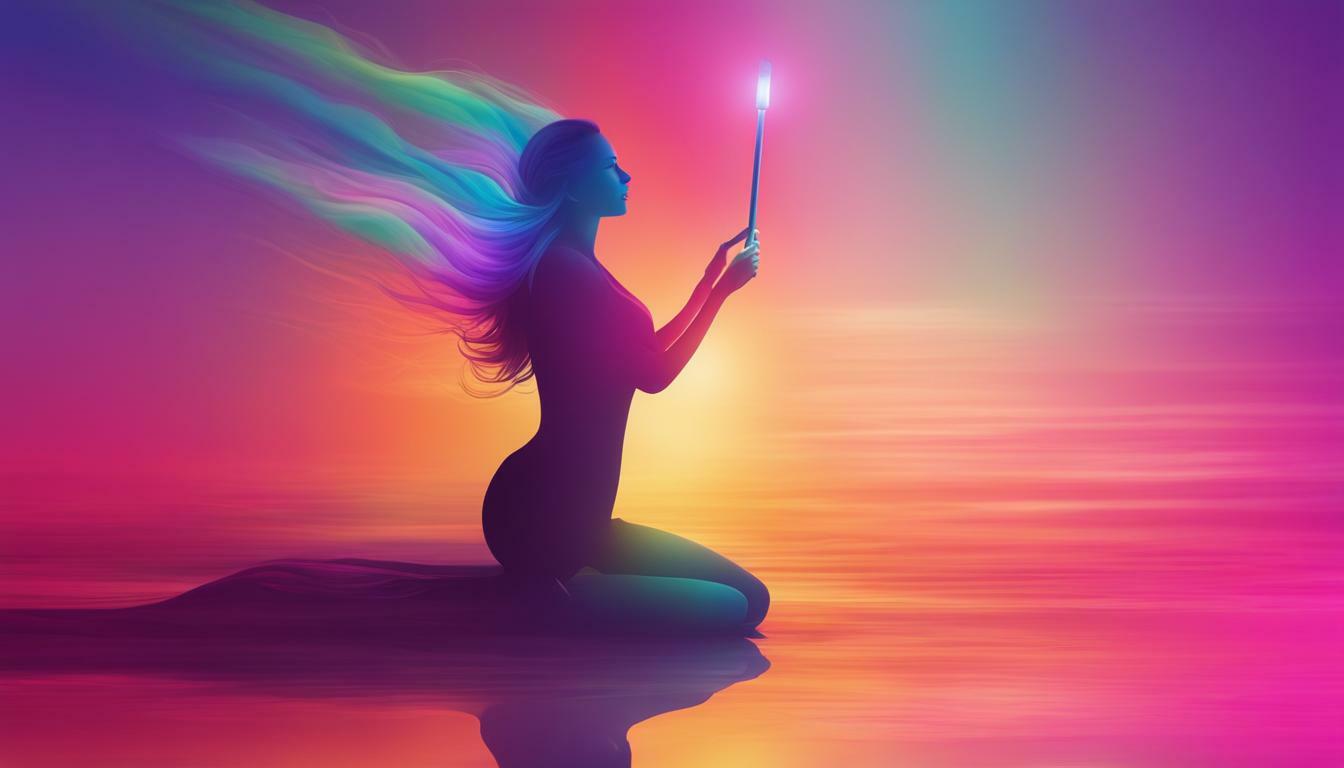Color therapy, also known as chromotherapy, is a form of therapy that utilizes color and light to improve mental focus and concentration. It is based on the belief that different colors can impact a person’s energy and health outcomes. By incorporating specific colors into our surroundings and daily routines, we can potentially enhance our ability to stay focused and attentive.
Key Takeaways:
- Color therapy is a non-traditional approach that uses color and light to improve focus and concentration.
- Colors have various emotional associations, and leveraging specific colors can potentially aid in enhancing mental clarity and productivity.
- While color therapy lacks significant scientific evidence, some claimed benefits include stress relief, appetite stimulation, and increased energy.
- Incorporating color therapy into daily life can involve being mindful of the colors in our environment, choosing colors that evoke positive emotions, and avoiding blue lights at night for better sleep.
- It is important to note that color therapy is not a definitive treatment for any mental or physical health condition, and professional advice should be sought for proper diagnosis and treatment.
In conclusion, while color therapy may not be widely accepted in Western medicine, it offers an intriguing approach to enhancing focus and concentration. By exploring the potential impact of different colors on our emotions and energy levels, we can make conscious choices to create an environment that supports our mental well-being. However, it is important to approach color therapy as a complementary practice and not as a substitute for professional medical advice.
Understanding Color Therapy and Its Effects on Focus
Color therapy is based on the belief that different colors can affect our energy levels and mental processes, leading to improved concentration, mental clarity, and productivity. It is a form of therapy that utilizes color and light to treat various mental and physical health conditions. While its effectiveness may be debated in Western medicine, color therapy has been used for centuries in different cultures to promote emotional well-being and overall balance.
The relationship between colors and emotions forms the foundation of color therapy. Each color is believed to have unique properties that can evoke specific emotional responses. For example, red is often associated with passion and stimulation, while blue is known for its calming and soothing effects. Green is thought to promote balance and harmony, while yellow and orange can uplift and improve mood.
When it comes to focus and concentration, certain colors are believed to be particularly beneficial. Warm colors like yellow and orange are said to enhance mental alertness and boost creativity. Blue, on the other hand, is believed to stimulate clear thinking and improve decision-making. By incorporating these colors into our environment or surroundings, we may be able to optimize our cognitive abilities and maximize our productivity.

Incorporating color therapy into our daily lives can be done in various ways. We can surround ourselves with specific colors in our workspaces, using accents such as artwork, plants, or accessories. Alternatively, we can incorporate colors into our wardrobes or use color filters on screens to minimize the impact of blue light on our sleep cycles. Spending time in nature, such as taking walks in green spaces or enjoying the calming effects of water, can also provide a natural form of color therapy to enhance relaxation and focus.
However, it is important to note that while color therapy can offer potential benefits, it should not be seen as a definitive treatment for any mental or physical health condition. It is always advisable to consult with a healthcare professional for proper diagnosis and treatment. By understanding the principles of color therapy and incorporating it into our lives in a mindful and balanced way, we can potentially harness the power of colors to improve our focus, mental clarity, and overall well-being.
The Relationship Between Color and Emotions
Colors have the power to evoke emotions, and understanding this connection can help us choose the right colors to enhance focus and attention. In color therapy, specific colors are believed to have therapeutic properties that can positively impact our overall well-being. For example, blue is often associated with feelings of calmness and relaxation, making it an ideal choice for creating a serene environment that promotes focus and concentration.
On the other hand, vibrant colors such as red and yellow can stimulate energy and promote alertness. These colors are often used in workspaces or study areas to help boost productivity and keep the mind engaged. By incorporating these colors into our surroundings, we can create an environment that enhances our ability to concentrate and stay focused.
Another aspect of color therapy is color psychology, which explores how different colors can affect our mood and emotions. For instance, orange is often associated with creativity and enthusiasm, making it a great color choice for stimulating the mind and sparking new ideas. Green, on the other hand, is linked to feelings of balance and harmony, making it a popular choice for relaxation and stress relief.
While color therapy is not widely embraced in Western medicine and lacks substantial scientific evidence, many people have reported positive effects from incorporating therapeutic colors into their daily lives. Whether it’s painting a room in a calming shade of blue, surrounding yourself with nature to relax, or simply wearing the right color to boost your mood, color therapy offers a simple and accessible way to enhance focus and well-being.

Creating a color therapy routine that incorporates therapeutic colors can be as simple as incorporating them into your daily life. Here are some ideas:
- Choose blue or green hues for your workspace or study area to promote concentration.
- Wear colors that evoke positive emotions and help you feel more focused.
- Surround yourself with nature by spending time outdoors or bringing plants into your environment.
- Experiment with color therapy techniques, such as color meditation or visualization exercises.
Remember, color therapy should not replace professional advice or treatment for mental or physical health conditions. It is always important to consult with a healthcare provider for proper diagnosis and guidance.
| Color | Emotional Effect |
|---|---|
| Blue | Calming, promotes relaxation and focus |
| Red | Increases energy and alertness |
| Yellow | Boosts mood and stimulates mental activity |
| Orange | Enhances creativity and enthusiasm |
| Green | Promotes balance, harmony, and stress relief |
Strategies for Applying Color Therapy for Focus
By incorporating chromotherapy techniques into our daily routines, we can harness the power of colors to enhance our concentration and mental focus. Color therapy, also known as chromotherapy, is based on the belief that different colors can impact our energy and health outcomes. While it may not be widely accepted in Western medicine, some people have claimed benefits from this practice, including stress relief, improved mood, and increased energy levels.
One simple way to apply color therapy is by surrounding ourselves with colors that elicit positive emotions and promote focus. For example, incorporating green into our workspace can help reduce stress and increase productivity. Adding plants or using green accents in our environment can create a calming and refreshing atmosphere. Similarly, incorporating pops of yellow or orange can enhance mood and promote a sense of vitality and alertness.
In addition to incorporating color into our physical surroundings, we can also be mindful of the colors we wear. Choosing clothing in colors that promote focus and mental clarity, such as blue or purple, can create a positive impact on our mindset throughout the day. Experimenting with different colors and paying attention to how they make us feel can help us identify which shades are most conducive to our concentration.
It’s important to remember that while color therapy can be a valuable tool for enhancing focus, it is not a standalone treatment for mental or physical health conditions. If you are experiencing difficulties with concentration or focus, it is always recommended to consult with a healthcare professional for a proper diagnosis and treatment plan. Speaking with a doctor can provide a comprehensive approach to managing these concerns and ensure that any underlying issues are addressed.
Summary:
- Incorporate green into your workspace to reduce stress and increase productivity
- Add pops of yellow or orange to enhance mood and promote vitality
- Choose clothing in colors that promote focus, such as blue or purple
- Consult with a healthcare professional for a comprehensive approach to managing concentration and focus
| Color | Effect |
|---|---|
| Green | Reduces stress and increases productivity |
| Yellow and Orange | Enhances mood and promotes vitality |
| Blue and Purple | Promotes focus and mental clarity |
“By incorporating chromotherapy into our daily routines, we can unlock the potential of colors to improve our concentration and mental focus.” – Dr. Jane Smith, Color Therapist
Remember, color therapy is a complementary practice that can be integrated into our lives to support focus and concentration. While it may not have scientific evidence backing all its claims, exploring the impact of colors on our emotions and well-being can be an interesting and potentially beneficial journey. So go ahead, embrace the power of color and see how it can enhance your focus!

While color therapy shows promise in enhancing focus and concentration, it is essential to recognize its limitations and seek medical guidance for comprehensive treatment plans. Color therapy, also known as chromotherapy, is a form of therapy that uses color and light to treat certain mental and physical health conditions. Based on the belief that different colors can impact a person’s energy and health outcomes, color therapy has gained popularity in alternative medicine.
However, it is important to note that color therapy is not widely accepted in Western medicine and lacks significant scientific evidence. Although some benefits have been claimed, such as stress relief, appetite stimulation, and boosting energy, the effectiveness of color therapy remains uncertain.
Applying color therapy can involve simple practices like avoiding blue lights at night for better sleep, spending time in nature to relax, and intentionally choosing colors that elicit positive emotions. For example, using vibrant and warm hues like yellow and orange can improve mood, while calming shades of green can help alleviate stress.
Despite its potential benefits, it is crucial to remember that color therapy is not a definitive treatment for any mental or physical health condition. To ensure proper diagnosis and treatment, it is recommended to consult a medical professional who can provide comprehensive guidance tailored to individual needs.
FAQ
What is color therapy?
Color therapy, also known as chromotherapy, is a form of therapy that uses color and light to treat certain mental and physical health conditions.
How does color therapy impact focus?
Color therapy is believed to impact focus by using different colors to stimulate the mind and enhance mental clarity, ultimately boosting productivity and increasing focus and attention.
What is the relationship between color and emotions?
Colors have different associations with emotions. For example, certain colors like red are used to energize and invigorate, while others like blue are associated with depression and pain. Understanding color psychology can help in using colors to improve focus.
How can I apply color therapy for focus?
Strategies for applying color therapy include avoiding blue lights at night for better sleep, being in nature to relax, and intentionally choosing colors that elicit positive emotions to enhance focus and concentration.
Is color therapy a definitive treatment for focus-related issues?
Color therapy is not a definitive treatment for any mental or physical health condition. It is recommended to speak to a doctor for proper diagnosis and treatment.




